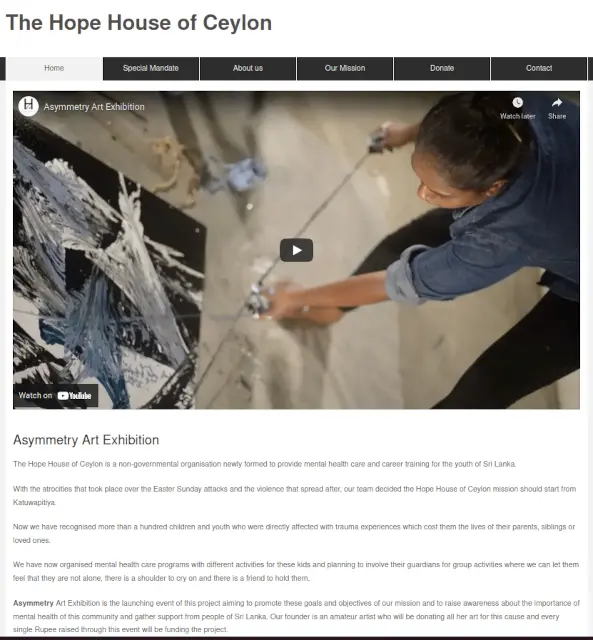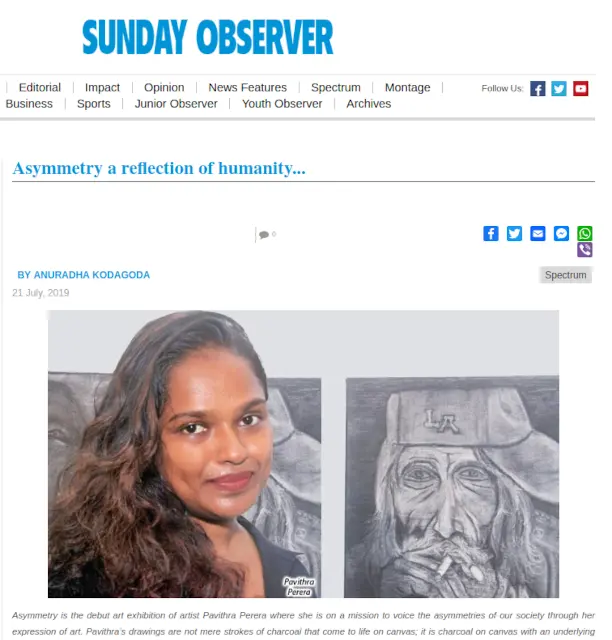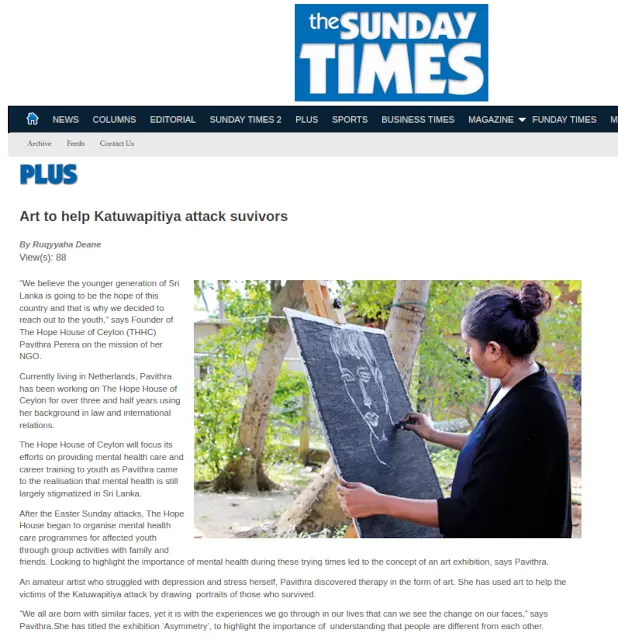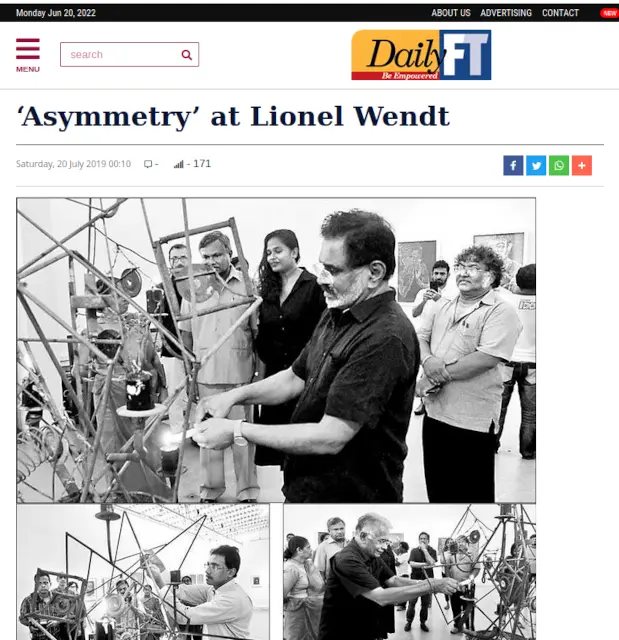Asymmetry
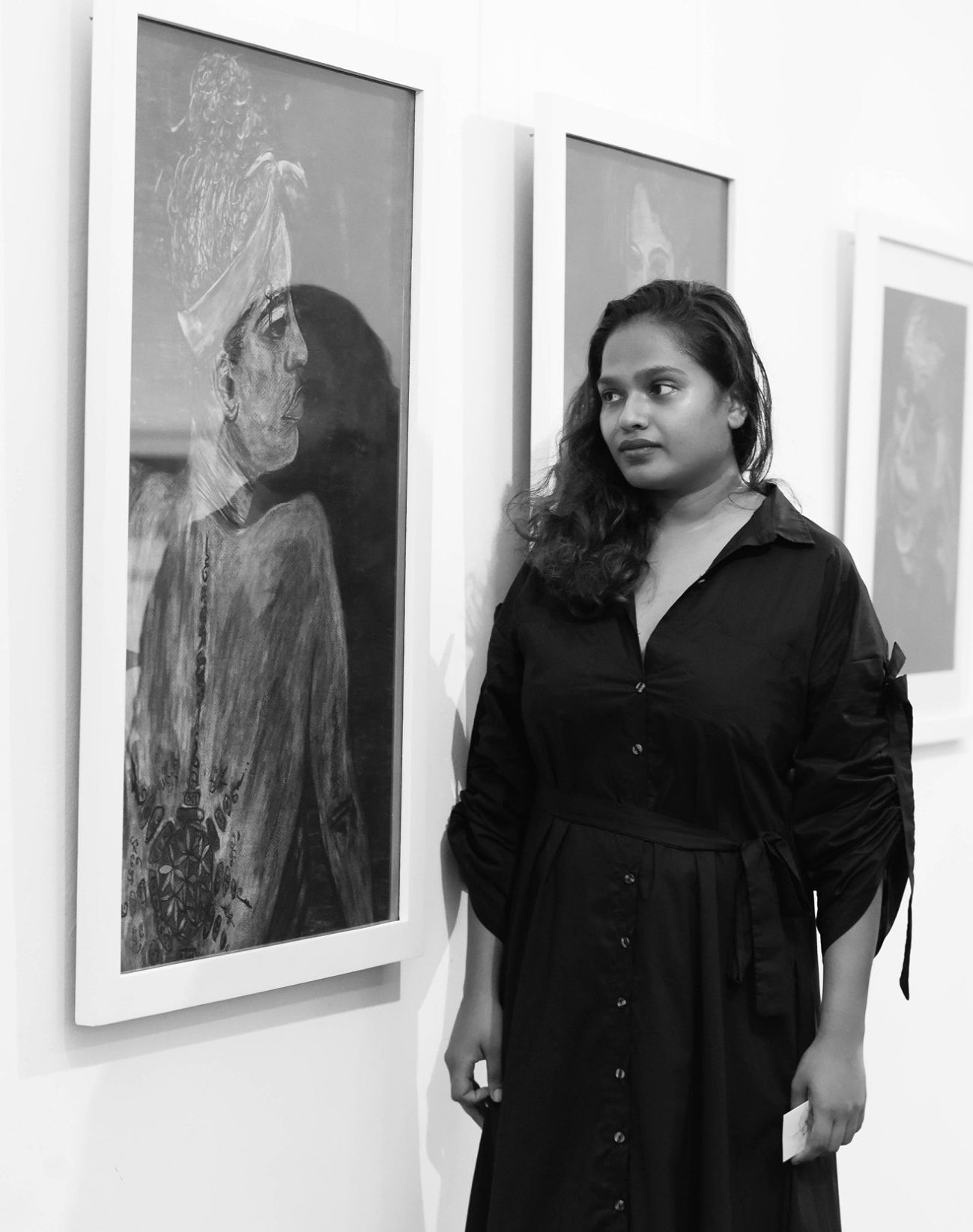
Launching The Hope House of Ceylon
17th - 21st July 2019 Lionel Wendt Art Gallery
Colombo Sri Lanka
This is the debut exhibition of amateur artist Pavithra Perera where she is on a mission to voice asymmetries of our society through her expression of art. Pavithra's drawings are not mere strokes of charcoal that come to life on canvas, it is charcoal on canvas with an underlying purpose.
Her art is a social intervention that calls for urgent action to help those who have been traumatised by political violence in North as well as the South. Pavithra's drawings are a gateway to reflect on our surroundings that have been marred by the ugly scars of politically motivated violence.The inner feelings of the victims who are suffering in silence are depicted with lines, shades and patches of colour in the work of the artist.
The exhibition portrays the inner streams of thought of those who are struggling to come to terms with their lives after being afflicted by pain and sorrow. Her most recent drawings depict the pain of those who suffered as a result of the Easter Sunday bombings.
Pavithra's work is the reflection of an ambitious social intervention.
Consultant
University of Vocational Technology
Sri Lanka
Body of work
Faces so loud
"This is a collection of Portraits done after I spent time with the victims of Easter Day attacks on 21st of April, 2019 in Sri Lanka and the violence that took place after.
As a 'bottom to top approach', our group, The Hope House of Ceylon, decided, we should listen to their side of the story and understand their genuine need for a social intervention like this, before we approach them.
Rather than us trying to voice them and bring solutions we thought it's paramount to let them voice their issues, so we can try bringing solutions through an understanding of their social needs. Only then, can we find a way of empowering them.
In this journey I made few stops to do a number of portraits sittings with some of the victims, and I hope I have done my best to voice their feelings through those rough charcoal lines."









Art is my therapy
This is a collection of paintings and drawings I have done while studying in England and Netherlands. It is a fruit of mental healthcare services I received in Europe with a combination of my passion for the human face, the life story I learned to read through those asymmetrical characters in their faces.
These can be seen as an effort of trying to touch the emotions and expressions in faces rather than the perfect shape or the picture of human face. As an amateur artist without any learning of using brushes, techniques or media this work is done with charcoal and acrylic on fingertips with an instinct of expession.















Acrylic on fingertips





About Asymmetry
Positive Social intervention for better Society
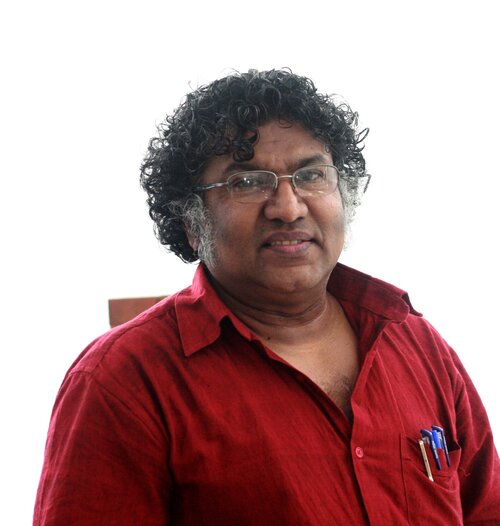
Prof. Chandraguptha Thenuwara
Department of History and Art Theory
Faculty of Visual Arts
University of the Visual and Performing Arts
Sri Lanka
I wish her good luck for the social caring effort and the art exhibition she has organised as an amateur artist.
In a time where social caring efforts and art have a distant relationship, if more artists involved to working on reducing that distance, it would be a big help for us to enjoy a better society today.
Asymmetry Art Exhibition can be seen as one of the social efforts I explained, which we can use as an opportunity to open a discussion among people. A discussion on how art can be used as a positive tool to make that social intervention a reality. I feel happy to see that she has decided to turn her focus on this mission.
This is a heavy role with lots of responsibility. Therefore, I appreciate her effort again going beyond evaluating the quality or the excellence of her artwork.
Not only she has many talents in her, but she has dedicated herself to involve in good social work. Thirty years of war and the recent atrocities Sri Lanka has faced shows us the importance and the need of social caring involvement. On one side, to change our social ideologies and on the other side, to practice a habit of enjoyment, we are in need of social action.
It is important to highlight the fact that she is gathering a group of people to walk a journey towards that mission. Art can be a tool to a very long journey. And now art is being used around the world in many positive social interventions. Going beyond hanging art as a decoration or appreciating the beauty at a museum, using art to release our oppressed feelings, to practice art as a therapy to heal traumas can be very important.
I hope this initiative which has been taken to turn our focus on such a mission will be successful. And I believe she will go on sharpening her artistic expressions and search for more various paths in expressing herself through art.
Moreover, I wish there will be a group of people joining her in this work who carry the same thought as her and she will receive the support she needs to carry out this positive social intervention for a better society.
Beyond the limits
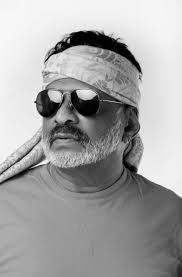
When I read Pavithra's work I see it's not enough to look at just her artwork. But also her way of living, naive qualities of her art, and the knowledge she gathered outside of academic education and her aggressive way of expressing it. Because they all add character to her final art piece. When you look at her art we can see these characteristics quite clear. She believes in her own phase and discipline. It's really interesting to see how she works without an academic knowledge of measurements, volume or perspective, but still working with her instinct of those values and able to mark them roughly in her work.
It's not that she purposely ignores these values in her work, but it's important to see that she refuses to frame herself in them. Thus, we can see she is constantly questioning herself on methods and way of expressing herself outside of the academic frame. I think this constant fight in her mind, whether her style is right or wrong - adds that stubborn way of drawing that she carries out in this work.
Her use of charcoal is a good evidence to prove my reading. With a style like this we tend to question whether she is right or wrong in this situation. But I think it's right - she is doing everything in her capacity to give what's asked by the art piece, to do justice to a feeling that she focuses in that particular work.
There is no right or wrong in art. And the thought process of trying to figure out whether she is right will open new windows for her to enjoy the work and moreover to find new hidden paths of expression. What we should question is whether we feel art, whether the artist is expressed through his or her art. Even though you have academic experience or education, if others cannot feel through your art, what is the use of it? Pavithra's work makes us feel, feel those characters in her portraits even though we have not met them in person.
We enjoy her artwork through that feeling she sparks in us. So we understand her work and are even influenced by her way of expressing it. As an example, we can see there is a very sharp dark line right in the middle of the nose, which, again, is outside of academic training. But merely asking whether her method here is right or wrong, will not let us read her art. It is beyond those limits
